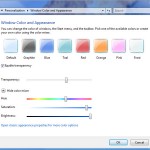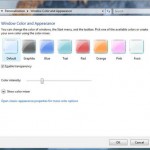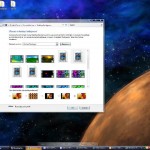Windows Aero is the name of the new graphical user interface (GUI) and visual style (or color scheme) in Windows Vista, which propel the interface to an enhanced level of visual sophistication that is more responsive, more manageable, cleaner, more powerful, more efficient and most aesthetically pleasing, beside providing a further level of clarity and confidence to Windows users. Windows Aero is acronym (or backronym) for Authentic, Energetic, Reflective and Open, and the Aero also includes new transparencies, 3D animations and eye candy.
To run Windows Vista with Aero feature, the PC needs to fulfill Windows Vista Premium Ready PCs specification and system requirements. That’s why you will need premium graphics card to accelerate the Windows Aero interface display. The graphics hardware needs to at least supports DirectX 9 graphics with a WDDM driver, has a minimum of 128 MB of graphics memory, supports Pixel Shader 2.0 and also supports 32 bits per pixel. With such a high end graphics accelerator card, will the system consume additional power or increase the overall power consumption of the system?
The Tech Report does a test with Windows Vista x64 version public release candidate build 5728, with various graphics cards such as Radeon X1900 XTX, Radeon X1800 GTO, GeForce 7900 GTX, GeForce 7900 GT, and GeForce 7600 GT installed on a system with an Athlon 64 X2 5000+ processor, MSI K9N SLI Platinum motherboard, 2GB of Corsair DDR2 memory, Western Digital Caviar RE2 hard drive, and a 700W OCZ GameXStream 700W power supply. Power consumption of the system is measured when system is idle with Windows desktop, idle with Windows Media Player and Internet Explorer windows open on the desktop, and when using Aero’s fancy 3D window switching feature, on each graphics card.
The Tech Report concludes that “none of our configurations consumed more than an additional watt moving from Vista’s Classic to Aero interface. Power consumption did spike by between 10 and 15W when using Aero’s 3D window switching feature, though. This spike didn’t last for much more than a second, so it’s unlikely to have a significant impact on overall system power consumption or noise levels.”







